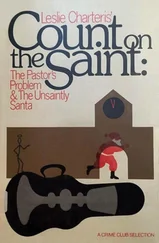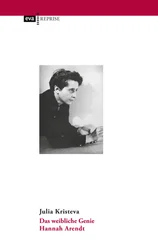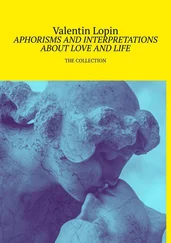
It was during the thirteenth century, then, that the peculiar profile of Christian mysticism took shape. Just as Thomas Aquinas 35was applying Aristotelian philosophy to biblical and evangelical revelation in order to show that the unity of God was accessible to reason, a galaxy of mystics prepared to sound out and diffract this same reason. They infiltrated it with the logics of love and Nothingness, giving the Greek Logos a pre-Socratic slant, and, rather than seek to prove God’s existence philosophically, they anticipated the contemporary investigation into the very need to believe in the form of a polymorphous experience of love, excessive and inescapable.
Among the figures who illustrated these various currents and left a profound mark on European culture, I would underline — as does Teresa, my guide in this research — the “modern” devotion of the Flemish school, especially the lovelorn Jan van Ruysbroek 36and the great poetess Hadewijch of Antwerp; 37but above all the Rhenish mystics, first among them Meister Eckhart, the “unborn” ( ungeboren ), who begged God to leave him “free of God.” A “deep calling unto deep,” 38“free of all things,” “creating emptiness,” the soul “begets God from within itself, where it has the color of God; there is the image of God.” The soul of the “nobleman” is, according to Eckhart, negative as much as unitive; a supreme Intellect, but also a superessential Nothingness. 39It reaches the mystical state in Gelassenheit , the “abandonment” sung by Angelus Silesius in his The Cherubic Pilgrim , 40after Henry Suso 41and John Tauler, 42Eckhart’s direct continuators, had managed to smuggle his message as far as Nicholas Krebs of Cusa 43and into the stream of “speculative” mysticism that culminates in Jakob Böhme. 44
The mystical theology thus created, having fertilized Christianity with late classical thought and Neoplatonic techniques of spiritual purification, would furnish the whole vocabulary of German philosophy. “Here is what we were looking for!” exclaims Hegel 45upon reading parts of Eckhart’s sermons 12 and 52, while Schopenhauer writes that Buddha, Eckhart, and himself “teach substantially the same thing.” Heidegger, for his part, constantly abandoning himself to the “abandonment” of Silesius, 46modulates the analogia entis that enables the conception of Being and Nothingness.
Fanned by the Salamanca student, John of the Cross, did the Rheno-Flemish wind blow as far as Teresa of Avila? It takes nothing away from La Madre’s originality to admit that the answer is yes .
Indeed, women are the foremost architects of this new dwelling-place of the soul we call mystical experience: an erotic, lethal escalation propels them to the summit of excessus . In Hildegarde of Bingen, this takes the form of a fabulous anatomical perception of her own body. 47It is enfeebled but sovereign in the cult of “nothing,” the apophatic thinking expressed by the “severed, immobile tongue” of Angela of Foligno. 48It inflames the anorexic Catherine of Siena with sacrificial devotion when she licks the pus from a cancerous breast: 49this fervent Dominican became the patron saint of Italy alongside Saint Francis of Assisi 50and Saint Thomas Aquinas. She was made a doctor of the Church by Pope Paul VI, at the same time as Teresa of Avila.
Why is there such a female infatuation with mysticism? Modern scholars have outdone one another in fascinated hypotheses. Is it because a woman’s whole body is a sexual organ, because desire scorches her skin, her eyes, her ears, her tongue, her clitoris, her vagina, and her anus alike, and all her senses sweep her toward the object of her desire while he, like the Beloved in the Song of Songs, is always eluding her, a fleeing spouse or hidden God, absent, invisible, imaginary, unimaginable? If a woman’s whole body is a sexual organ, it can just as thoroughly repress desire to the point of sickness or vacate it into daydreams, words, sublimity.
The reasoned Protestant faith was quick to pour scorn on such deviations: “Visionen will ich nicht!” declared Luther. 51But the Golden Age Spanish Illuminati did not hesitate to draw on reformed humanism, and the Counter-Reformation seeded in its turn a new flowering of mysticism.

While reformed congregations put the accent on Scripture and the charitable vocation of a Christian community whose moral rigor was intended to quell and resorb the excesses of the desiring body, the Catholics, whose resistance to this formula was empowered by the Counter-Reformation, strove to make the secluded meanders of faith plain to see within the actual space of the Church — to infiltrate the corpus mysticum via the corpus verum . 52From then on, the more modulated meaning of the word mystic exhibited itself with forceful brilliance: it no longer denoted an inaccessible concealment, but beckoned what is concealed to come forth; it summoned the torments of flesh and spirit to emerge into the light and to seduce us. The corpus verum —Christ’s Passion, of which the subject partakes — was no longer a protected secret. By the grace of the mystics and of the Church that consecrated them, the seduction became universal. 53Such was the context of Teresa’s experience.
This mutation would unfold through a long and patient labor of theology, ritual, and aesthetics, tending to invent an ecclesial mystical body to link the present of the ecclesial institution (the hierarchy) to its history (textual, scriptural), but also to couple the boundless intimacy of mystical experiences to the visibility of religious society. The hearing of confession had already broken down some social opaqueness. The elevation of the Host accompanied by its observed consumption made a spectacle of the sacramental body itself, exhibiting the mystery in public. All this contributed to manufacturing the paradox of a transparent intimate body . Private life was “individualized” by highly customized “spiritual guidance” and other “confidential” dialogues, leading to the dissemination of “Exemplary Lives” or “Exercises” for the edification of a fascinated populace. A radical transformation took place via this process of visualization of the sacred , which today we might call the mediatization of the sacred , in and through the new conception of the Church promoted by the third 54and fourth Lateran councils 55and given a radical twist by the Council of Trent 56and the ensuing Counter-Reformation. Even prior to that, however, as the hidden became progressively “mediatized,” so the new mysticism became “epiphanic”: the corpus mysticum would be a placing in common, a transparent solidarity with the wretchedness of the “exiled” creatures that we are, and beyond: “Omnes…habebant omnia communia” (All the faithful together place everything in common).
The brilliant novelty of the Counter-Reformation, whose signature saint Teresa became, was its way of placing the turbulence of desire in full view and in common, thanks to the transparency at work since the twelfth century: a turbulence that was sacred inasmuch as it was representable, secret inasmuch as sensual, and, not least, rhetorical. Erotic, tortured carnality would be magnified by composers and painters, Vivaldi 57and Tintoretto. 58And the city of Venice turned corpus mysticum in its entirety would deploy its perpetual therapy, the real presence of the desiring body indefinitely reborn, a renaissance in every painting and at every concert. It has been labeled an aesthetic religion. But it’s more than that: the “mystical body” and the “real body” come together in the art of the Counter-Reformation into an unprecedented blossoming of representation alive to the infinity of bodies. Inside-outside bodies, supple, mobile, baroque, transitive, contagious, the very bodies conjured up by Teresa of Avila; a sacred apprehension of God’s presence in that part of the soul where the sensible melds with the highest spirit. The mystical experience (Teresa’s experience, the one that intrigues me here), whether it lets itself be influenced by the mutations of the corpus mysticum while influencing them, or whether it is also subject to the course of secular history, never fails to cultivate, steadily and tirelessly, that third place, that mystical third consistent in union with the divine, hic et nunc .
Читать дальше













